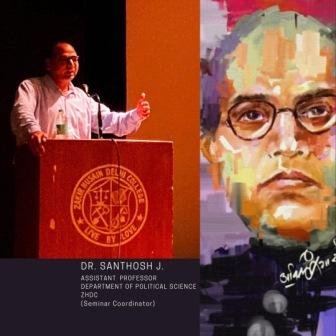Dr Santhosh J.
The Supreme Court’s verdict on the validity of the 103rd constitutional amendment or the 10% quota for the ‘poor’ among the so-called upper castes, instead of answering questions, raises many more further questions. The 3:2 majority verdict, at its core, fails to logically explain how the policy, which is individual centric and income based, addresses the issue of under-representation and can be justified. The three judges who upheld it seem to suggest that on the one hand reservation as a policy needs rethinking, while on the other hand they supported quota to another ‘caste group’ i.e. Savarnas. Therefore, the question arises as to whether the respected judges based their reasoning on the original purposes of the reservation, such as addressing historical injustice and providing adequate representation. Or they simply acted on political grounds, resulting in the court becoming more executive than the executive.
Proponents of this quota and the judgement argue that the proposed 10% does not violate the existing reservation. However, in practice, this policy came into effect in 2019 and the government promised to grant additional positions in various recruitments, but no such expansion has been seen. And because the policy was supposed to be implemented in 2019, the recruitment agencies in higher education and various central universities advertised teaching posts by manipulating the roster system and thereby advertised EWS posts, effectively killing all other existing reservations. Who gave these institutions rights to alter rosters and take away the opportunities of historically marginalised sections? What do these institutions and their heads suggest by their over-enthusiasm and disregard for the constitution?
Let us now come to the point of how the government uses the reservation policy as a political tool. The history of reservations in India is an interesting one; the first such policy for SC/STs was proposed in the 1950 constitution and was quickly challenged in the courts, resulting in the first amendment to the constitution. However, the 1950 reservation policy did not see the light of day until the 1970s, and in some cases the 1990s, and surprisingly, reservation for SC/STs is still a nonstarter in many sectors and is implemented without care and commitment even today.
The second instance of reservations for OBCs is a long battle. Various commissions were formed, and they submitted their recommendations from the 1950s to the 1990s. One such was the Mandal Commission which submitted it report to the government in 1980. However, governments came and went, ignoring volumes of data and the social, economic, and educational backwardness of OBCs. Finally, only because of the struggles of the people and the demands of the OBC and Bahujan parties for justice, in 1990, the VP Singh government announced the implementation of OBC reservations. By not accepting all of the Mandal Commission’s recommendations, the government approved an arbitrary 27 percent.
Even in this case, actual implementation did not begin until 2010 in higher educational institutions, and once again, people challenged it in the court, and the court imposed income restrictions and a 50 percent cap. The present and third variety of reservation is altogether a different game. Neither a commission was constituted nor any survey and data was gathered by the government. Just on the eve of the 2019 general elections, the government announced the 10% quota through an ordinance. There was no logic other than the government clearly making the reservation policy a political tool. There was no urgency in the case of SC/STs and OBCs, but in the case of EWS, every democratic institution, government institution, and court showed an unimaginable sense of urgency in implementing the same.
Though the current 50% general or unreserved quota exists on paper, in practice it can be considered to be reserved for the so-called upper castes. Furthermore, with the latest 10% quota, total reservation to Sarvanas increases to 60%. How can the smaller bench violate or override the larger bench’s order of a 50% reservation cap in the Indra Sawhney case of 1992? That, too, without any scientific data on the poor among the so-called upper castes? How can a constitutional court violate its own constitution by not applying logical reasoning and exclude the real poor? Is the court accepting and declaring that the reservation policy is like any other poverty alleviation programme by upholding the 10% quota? Or is it attempting to kill the spirit of social justice enshrined in the constitution? And, does it support the political right project of ending group-based reservations in India and transporting historically marginalised groups back to ancient times to reimpose varna order and enslave them? Will the educated sections among the Bahujans remain silent and act as mute spectators to their doom? Or will they fight back and reclaim justice, as some commentators argue, only time will tell.
The views expressed above are personal.
~~~
Dr Santhosh J. is Assistant Professor, Department of Political Science, Zakir Husain Delhi College, University of Delhi








